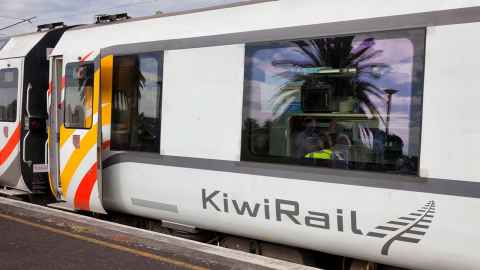Jury’s out on effects of rail investment
31 May 2021
Opinion: Seósamh Costello writes that investment in rail is a good start, but to reap the full benefits we will need to integrate it into a full transport solution.

The Government’s announcement of $1.3 billion in Budget 2021 builds on a strong commitment to rail in recent years that was long overdue. Successive governments have allowed the rail infrastructure and rolling stock to slowly deteriorate through under-investment and poor decision-making, resulting in a managed decline of this public asset.
Rail provides many benefits to society. The rail freight network removes trucks from our highways, reducing transport emissions and road maintenance costs, while increasing safety. Metropolitan rail services reduce traffic congestion in our largest cities, resulting in safer roads and reduced transport emissions. Investments in electrification of the metropolitan rail networks have further reduced transport emissions. Given the Government’s objective of net zero emissions by 2050, and that transport is a major contributor to New Zealand’s greenhouse gas (GHG) emissions, it is perhaps not surprising that rail is being heavily funded.
The long-term nature of the Government’s commitment to rail is transformative for KiwiRail as a business, allowing them to plan with confidence for the future. The under-investment of the past has understandably meant a focus on short-term decision-making. This commitment provides stability to a business that has been anything but in its many guises over the years.
As an investment in rail transportation, however, the jury is still out as to whether it will be transformative. Let me explain - because of years of neglect, the bulk of funding over the next decade will primarily be spent on returning the rail infrastructure, rolling stock and inter-islander ferry services to acceptable standards. Don’t get me wrong, this is needed - a reliable and resilient transport service has to be built on strong foundations. Once those legacy issues have been addressed, however, then they should provide a platform for further investment to support growth in rail freight.
While the billion dollar plus investment will grab the headlines, I would argue that the real paradigm shift is in the amendments to the recent Land Transport Management Act. This legislative change allows rail network funding to be incorporated into the Government Policy Statement (GPS), and allow KiwiRail to be funded from the National Land Transport Fund (NLTF) for the first time - metropolitan passenger networks being already included. This is important because it allows for integrated planning and investment decision-making in transportation. Spending on transportation shouldn’t be decided in silos. Instead, transport spending should be directed to the right transport solution for New Zealand - and this can only happen in an integrated funding environment.
A word of caution, however. Change is inevitable and technological advancements in transportation are accelerating that change. Future transport decisions should be based on providing the best solution for New Zealand, whether it be rail, road or whatever the future of multi-modal transportation holds. New technology and innovations mean that the future is uncertain, and brave decisions will need to be made to do the right thing to secure a transportation future that meets New Zealand’s needs. That will almost certainly include rail, but some of its benefits, relative to roads, will be eroded as, for example, the vehicle fleet in New Zealand electrifies, and as connected and autonomous (self-driving) trucks enter the market.
We will watch with interest as the future unfolds and we discover how ambitious future governments' plans are for rail, ideally as part of an integrated transport solution.
Dr Seósamh Costello is an Associate Professor in the Department of Civil and Environmental Engineering, University of Auckland.
This article reflects the opinion of the author and not necessarily the views of the University of Auckland.
Used with permission from Jury’s out on effects of rail investment 1 June 2021.
Media queries
Alison Sims | Research Communications Editor
DDI 09 923 4953
Mob 021 249 0089
Email alison.sims@auckland.ac.nz